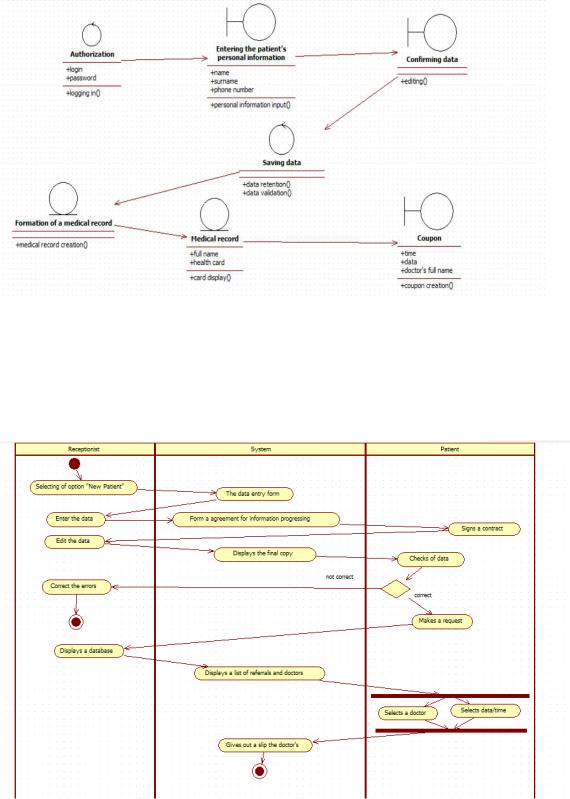
11020
.pdf




Pic. 1. Use Case diagram
An “Activity” diagram shows the decomposition of some activity into its component parts.
An “Activity” chart is presented for use case "New patient entry". The diagram consists of 3 sections: the receptionist, the patient and the system.
First, the receptionist performs the action selecting of option "New Patient", then the System opens the data entry form.
The receptionist enters the data and the System forms an agreement for information processing. The patient reads the conditions and signs the contract, after this the receptionist edits the data and the System displays the final copy. The patient checks the information. If the data is incorrect, the receptionist corrects the errors and this process ends. If the data is correct, the patient makes a request. The receptionist displays a database for this patient; the system displays a list of referrals and doctors.
586

Pic. 2. “Class” Diagram
Then the process of branching takes place. The patient selects a doctor and the date/time and the branching of actions ends. After that, the system gives out a slip to the doctor's and the process ends.
The diagram is presented in Figure 3:
Pic. 3. “Activity” diagram
After the system is created, system users evaluate the results obtained and make adjustments. The result of this phase is a ready-made information system that meets all the requirements of users.
587

